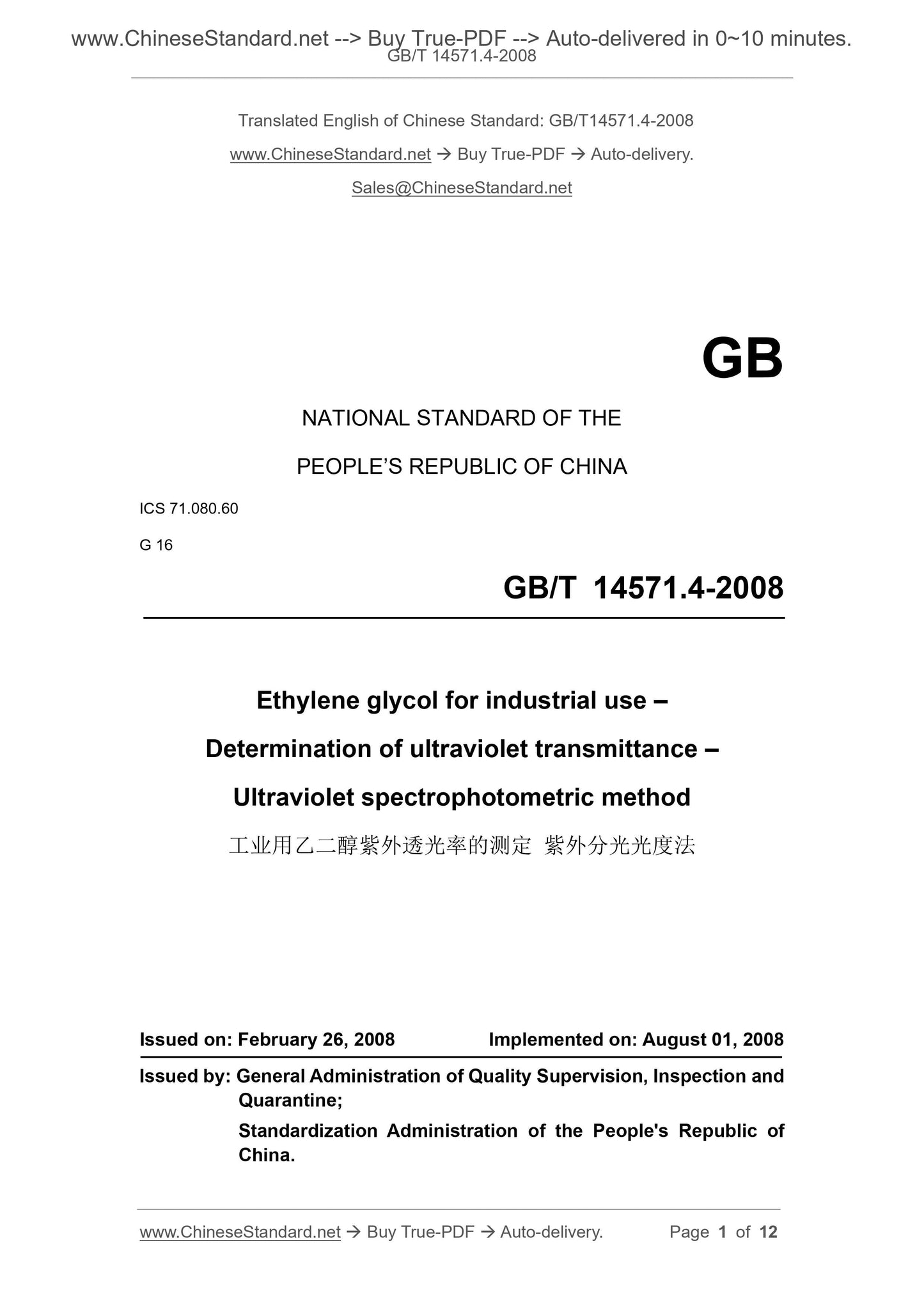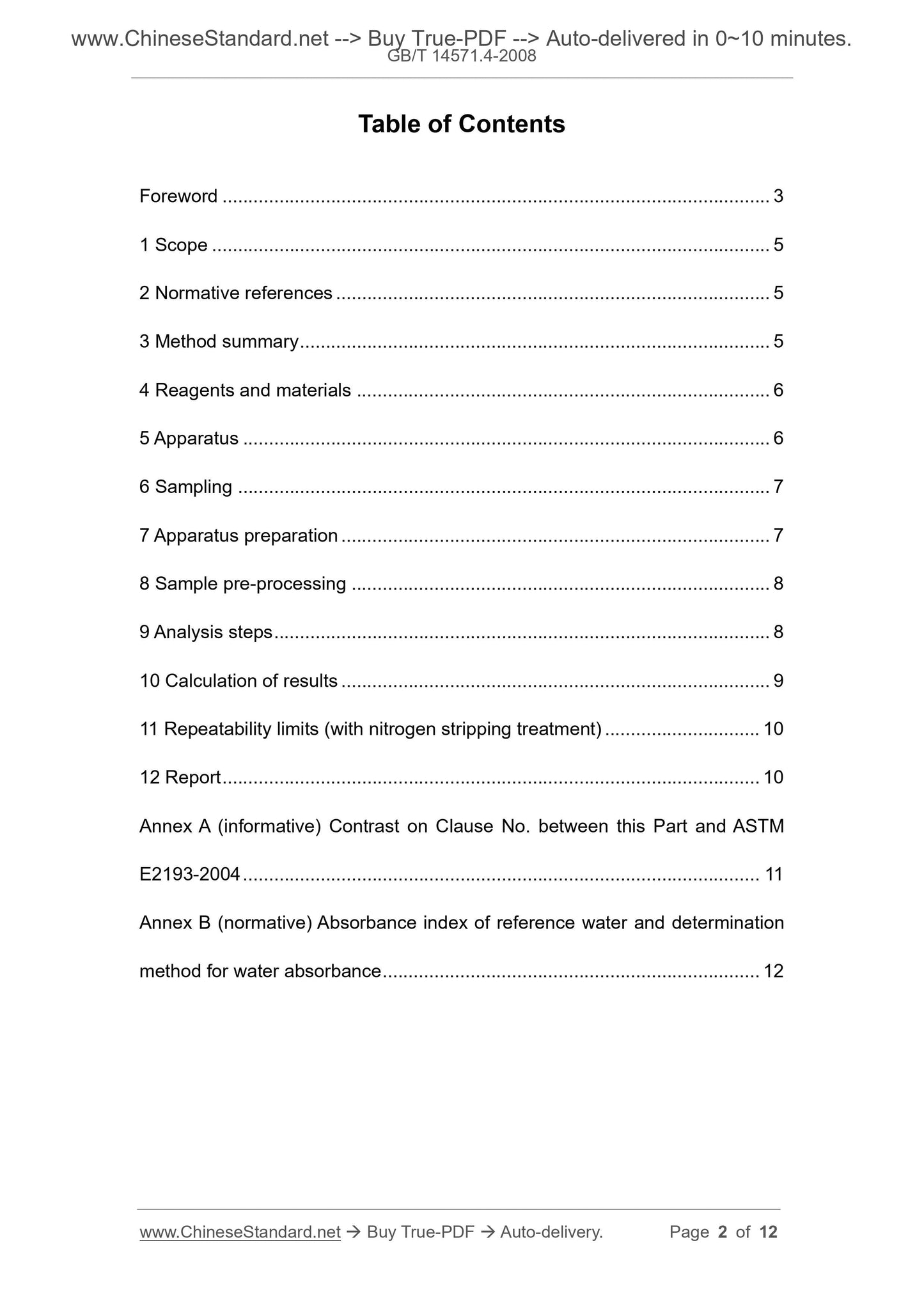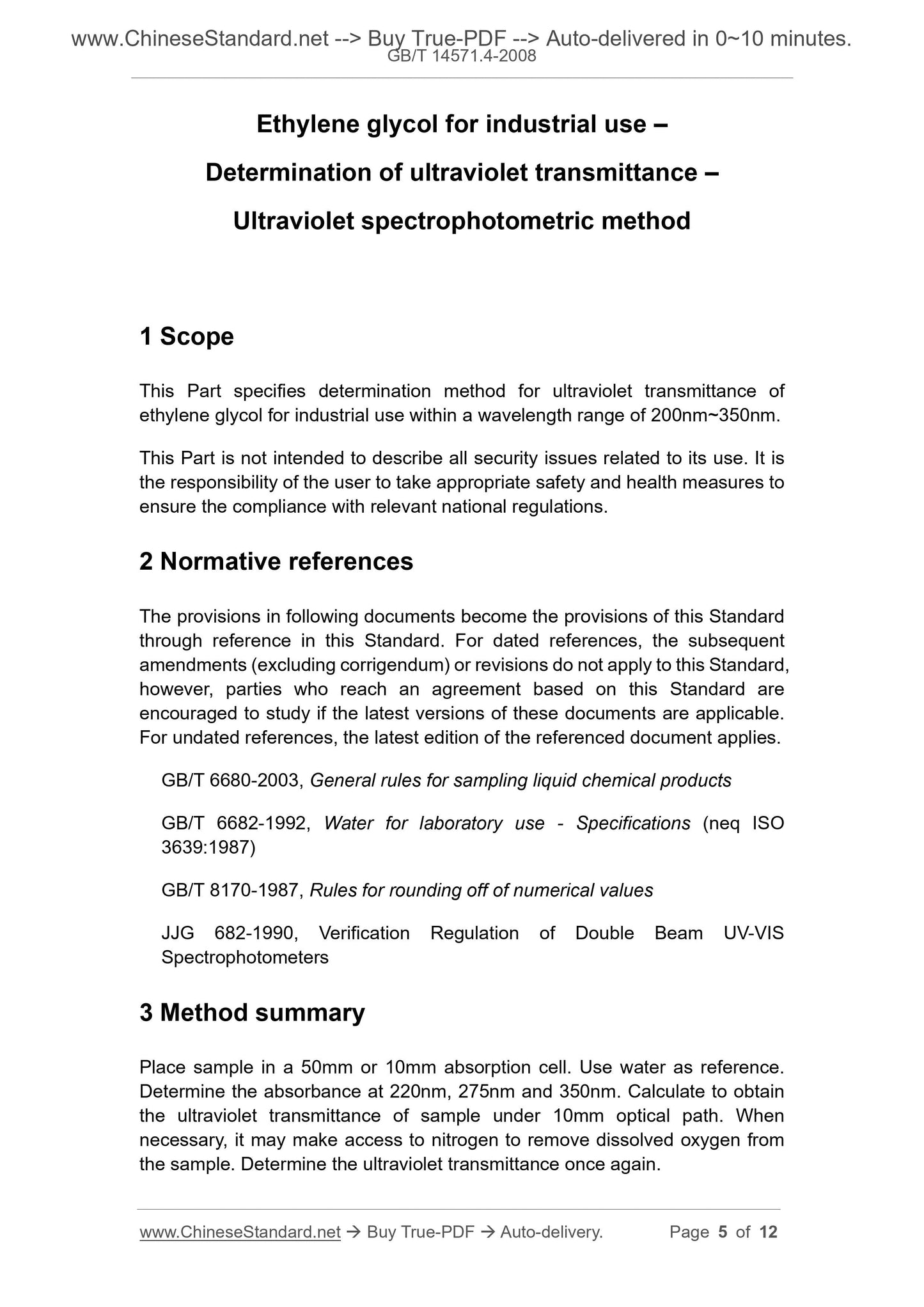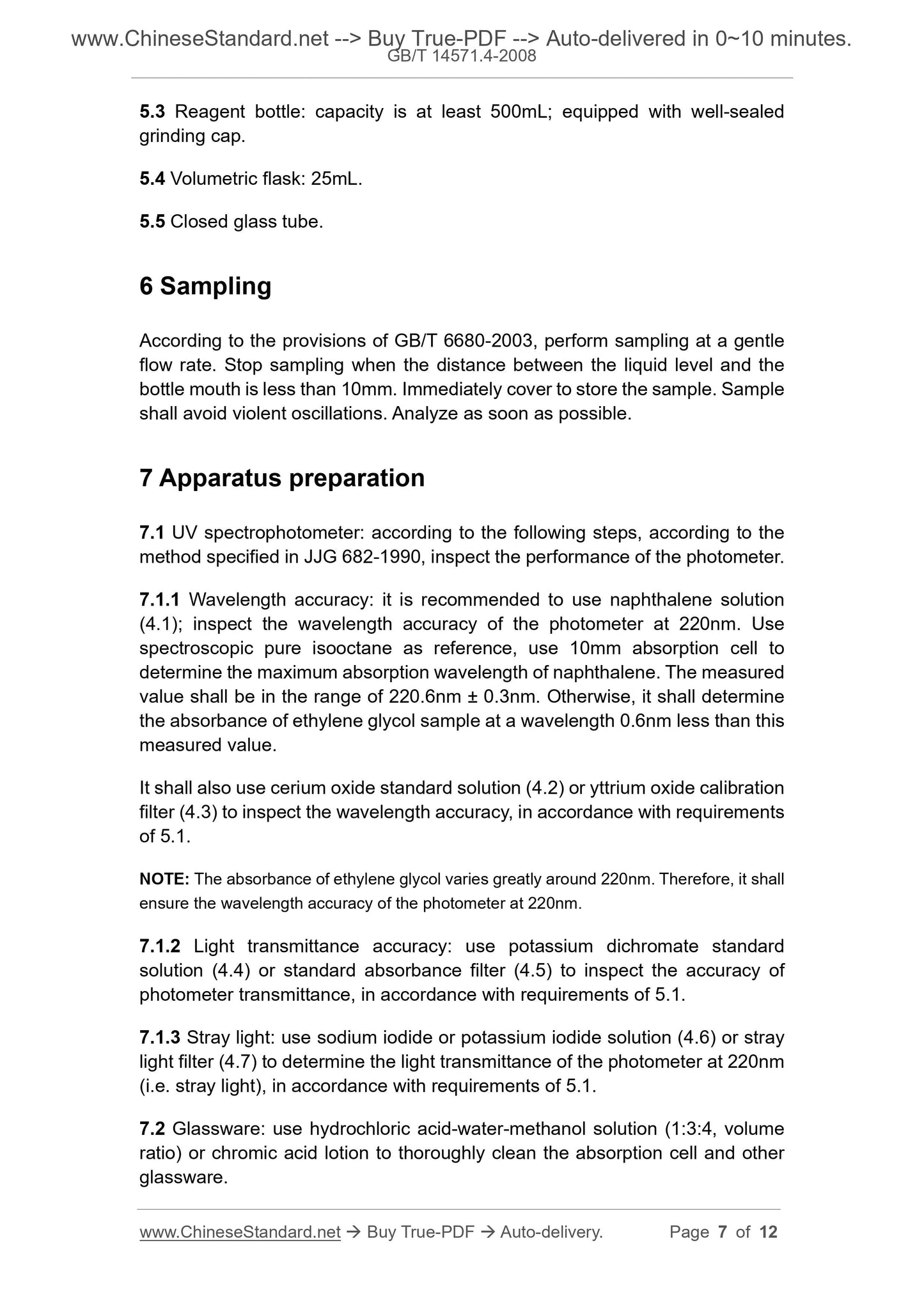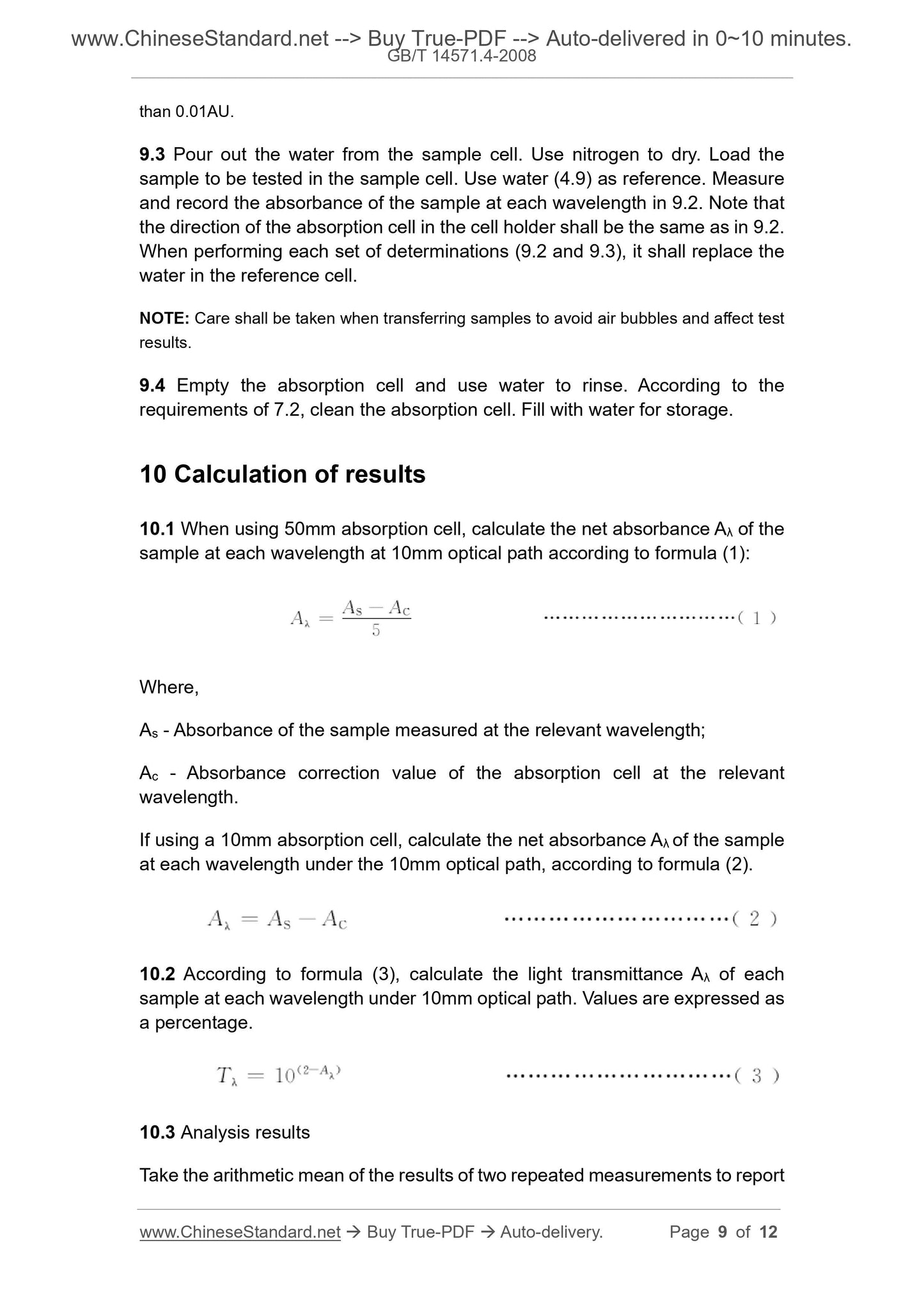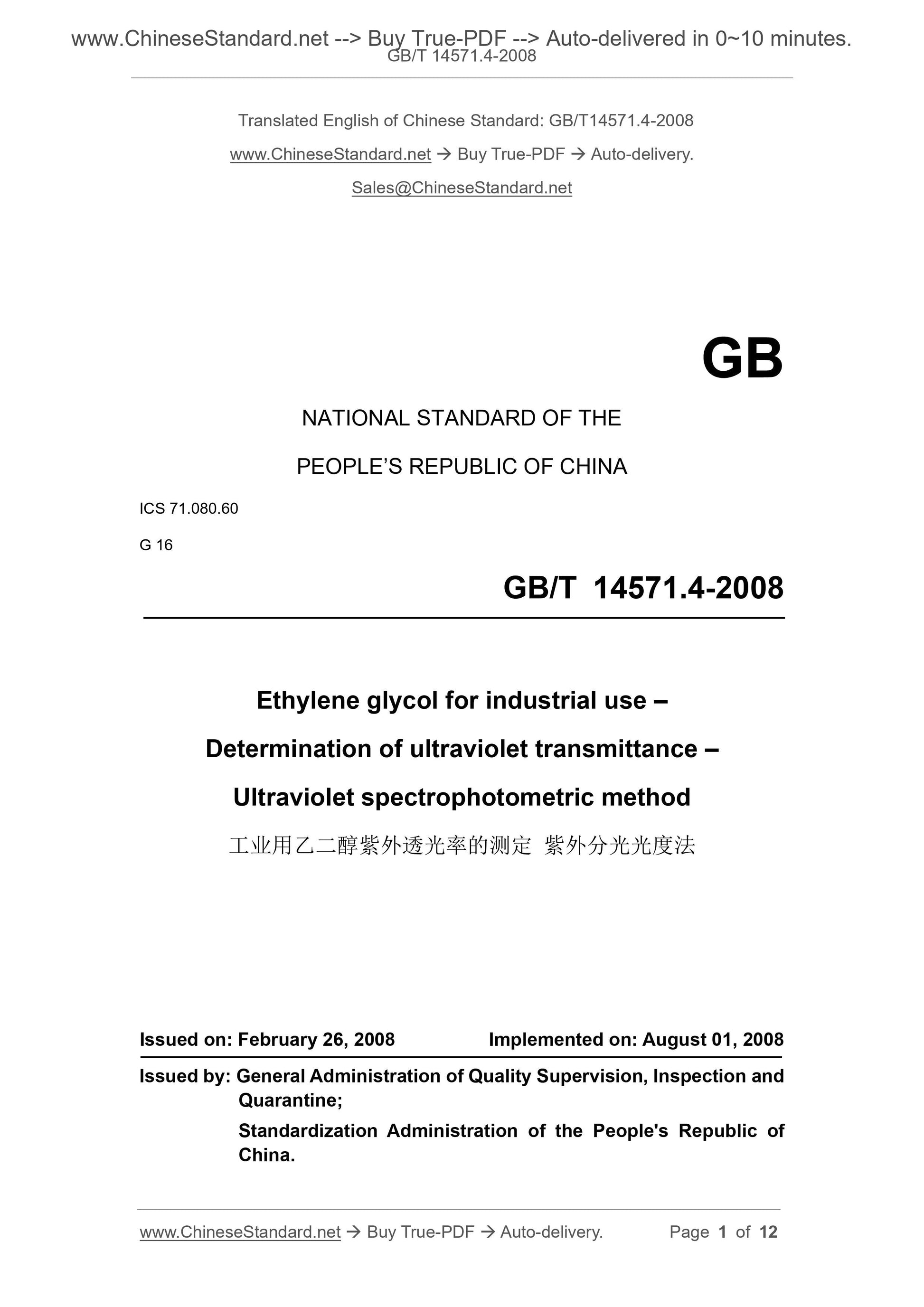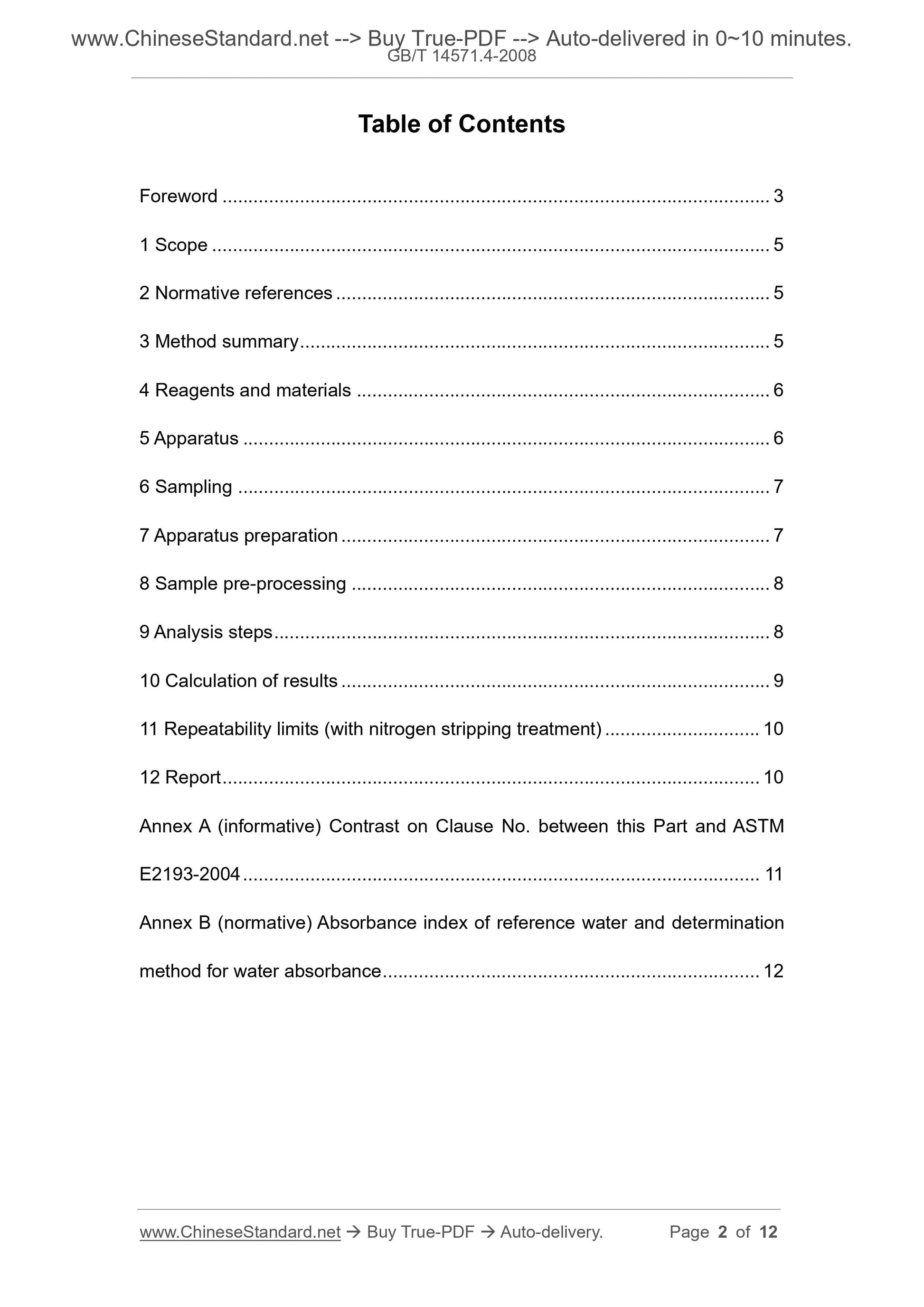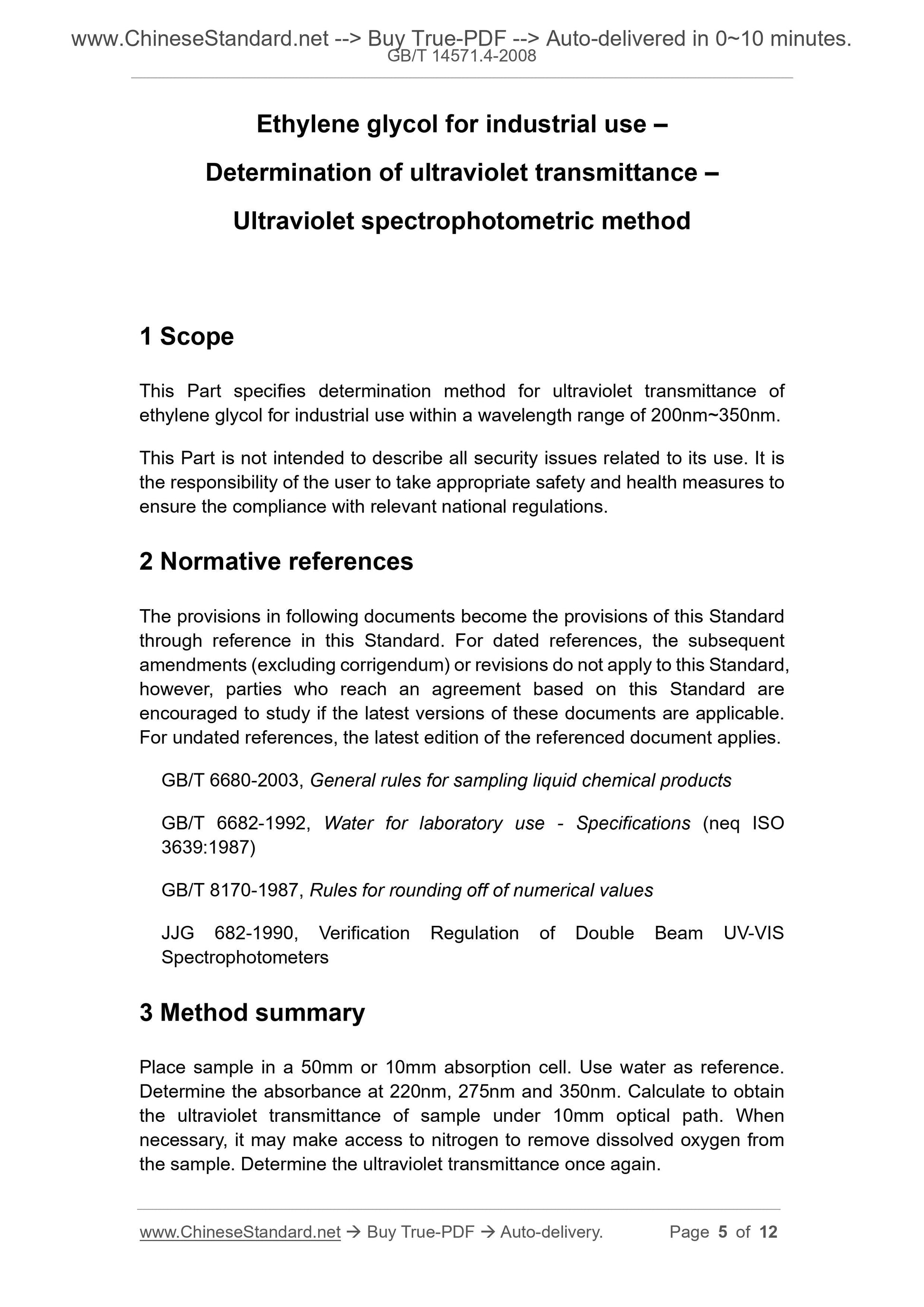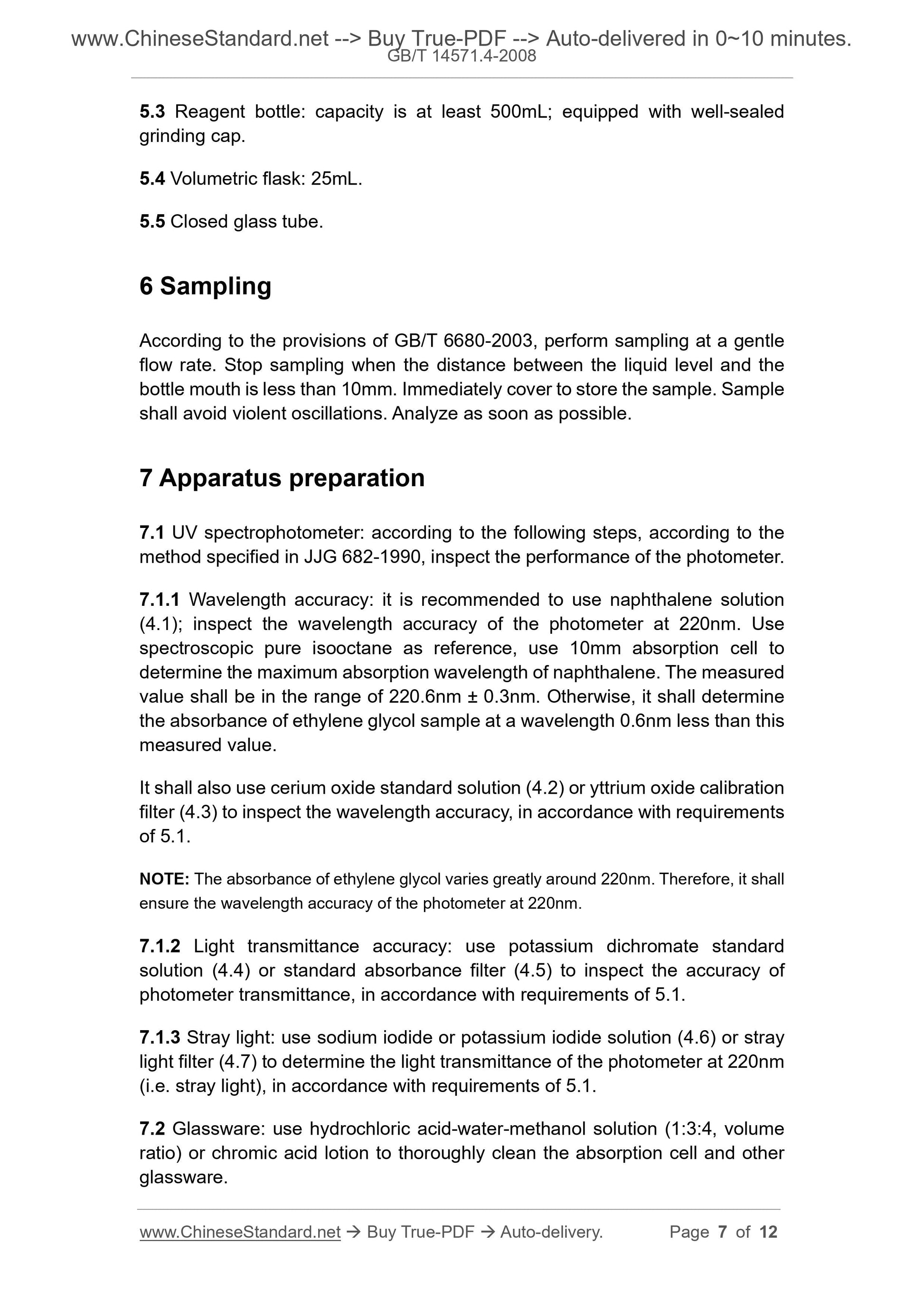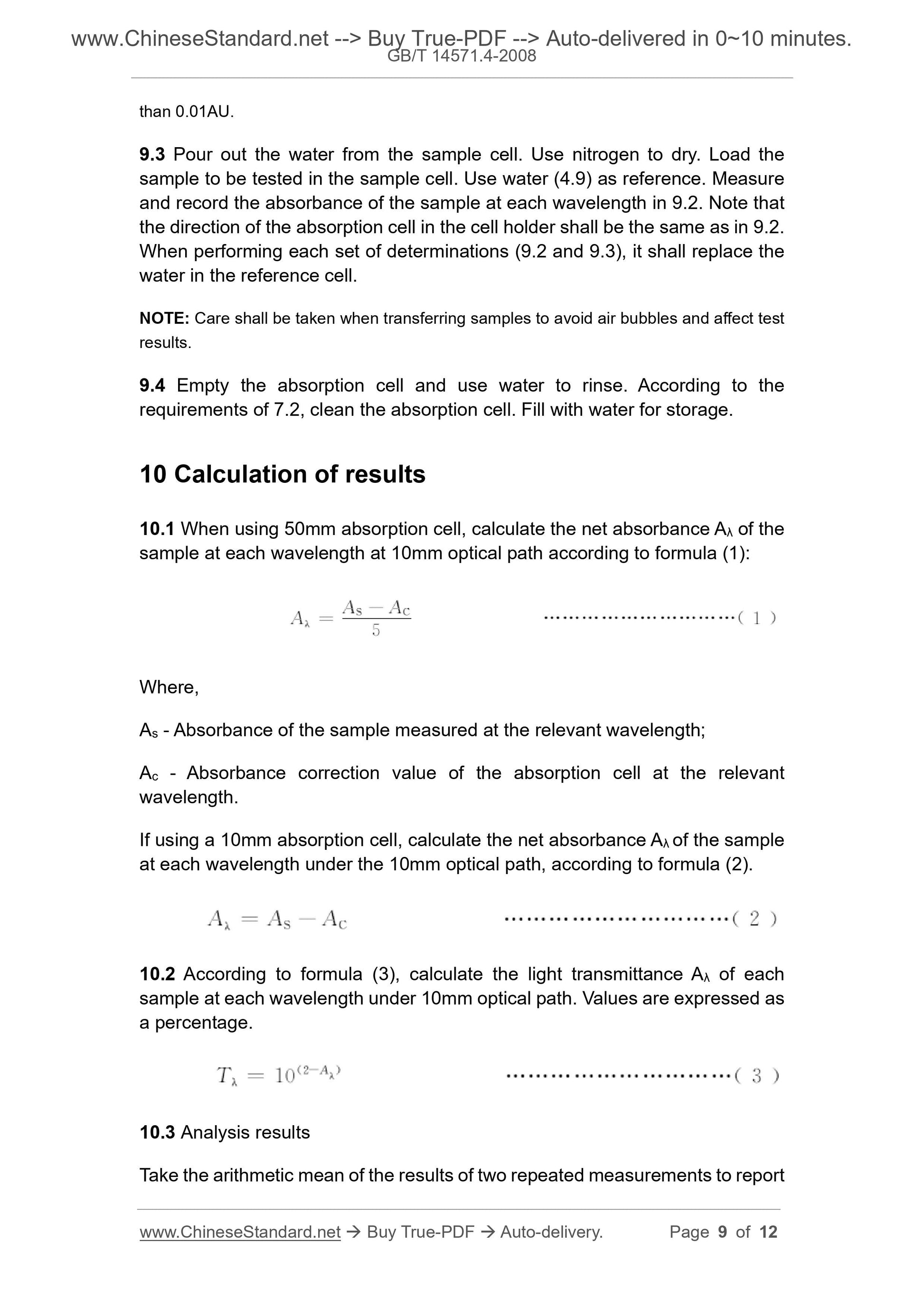1
/
of
5
PayPal, credit cards. Download editable-PDF and invoice in 1 second!
GB/T 14571.4-2008 English PDF (GB/T14571.4-2008)
GB/T 14571.4-2008 English PDF (GB/T14571.4-2008)
Regular price
$145.00
Regular price
Sale price
$145.00
Unit price
/
per
Shipping calculated at checkout.
Couldn't load pickup availability
GB/T 14571.4-2008: Ethylene glycol for industrial use -- Determination of ultraviolet transmittance -- Ultraviolet spectrophotometric method
Delivery: 9 seconds. Download (and Email) true-PDF + Invoice.Get Quotation: Click GB/T 14571.4-2008 (Self-service in 1-minute)
Newer / historical versions: GB/T 14571.4-2008
Preview True-PDF
Scope
This Part specifies determination method for ultraviolet transmittance ofethylene glycol for industrial use within a wavelength range of 200nm~350nm.
This Part is not intended to describe all security issues related to its use. It is
the responsibility of the user to take appropriate safety and health measures to
ensure the compliance with relevant national regulations.
Basic Data
| Standard ID | GB/T 14571.4-2008 (GB/T14571.4-2008) |
| Description (Translated English) | Ethylene glycol for industrial use -- Determination of ultraviolet transmittance -- Ultraviolet spectrophotometric method |
| Sector / Industry | National Standard (Recommended) |
| Classification of Chinese Standard | G16 |
| Classification of International Standard | 71.080.60 |
| Word Count Estimation | 8,879 |
| Date of Issue | 2008-02-26 |
| Date of Implementation | 2008-08-01 |
| Quoted Standard | GB/T 6680-2003; GB/T 6682-1992; GB/T 8170-1987; JJG 682-1990 |
| Adopted Standard | ASTM E2193-2004, MOD |
| Regulation (derived from) | National Standard Approval Announcement 2008 No.3 (Total No.116) |
| Issuing agency(ies) | General Administration of Quality Supervision, Inspection and Quarantine of the People's Republic of China, Standardization Administration of the People's Republic of China |
| Summary | This standard specifies the method for measuring industrial 200nm UV transmittance within the wavelength range of 350nm ~ with ethylene glycol. This section is not intended to illustrate its use of all safety issues. Therefore, the user has the responsibility to take appropriate safety and health practices and to ensure compliance with the relevant national regulations. |
Share
